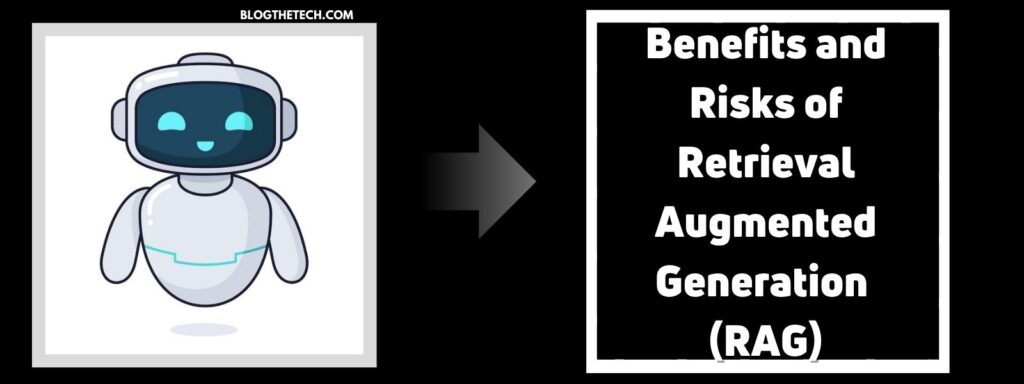Retrieval Augmented Generation (RAG) is a method that combines the power of models that are based on retrieval and models that are based on generation. The AI community likes this hybrid approach because it can give more accurate and relevant answers based on the situation. RAG does, however, have some pros and cons, just like any other technology.
Benefits of RAG
Better accuracy and context
Experts at Vectorize.io say that RAG uses large databases to get information, which is then used to make responses that are more accurate and fit the situation. This two-pronged approach helps cut down on the mistakes that usually happen with purely generative models.
Scalability
Scalability is one of the best things about RAG. RAG models can efficiently handle huge amounts of data because they include retrieval mechanisms. This makes them suitable for enterprise-level applications and large datasets.
Better Knowledge Base
The retrieval part lets RAG access a bigger body of knowledge, which lets it give better, more complete answers. This is especially helpful in fields that need specific knowledge or the most recent information.
Cost-Effective
RAG models may be cheaper than models that only use generative elements. By narrowing down the information that the generative model needs to process, the retrieval mechanism can lower the computational load. This can lead to lower operational costs.
User Satisfaction
RAG can greatly enhance user satisfaction by giving more correct and pertinent answers. This is especially important for customer service apps that need to respond quickly and correctly.
| Benefit | Description |
| Improved Accuracy | Combines retrieval and generation for precise responses |
| Scalability | Efficiently handles large datasets |
| Enhanced Knowledge Base | Accesses a broader and more current range of information |
| Cost-Effective | Reduces computational load, lowering operational costs |
| User Satisfaction | Increases accuracy and relevance, improving overall user experience |
Risks of RAG
Concerns about data privacy
RAG’s reliance on large-scale data retrieval creates big problems with data privacy. To stop misuse or breaches, strict privacy controls and data handling policies must be in place when dealing with sensitive information.
Bias and Fairness
The retrieved data could have biases that the generative model can spread and even make stronger. Making sure that RAG responses are fair and do not show too much bias is a difficult task that needs constant attention.
Dependence on Data Quality
The quality of the data that RAG models get has a big impact on how well they work. Responses that are wrong or do not make sense can come from bad or old data, which makes the system less reliable.
Complexity in Implementation
Putting retrieval and generative models together makes the system more complicated. This level of complexity can lead to higher costs for development and maintenance, and it takes specialised knowledge to manage well.
Trade-offs in performance
Due to the extra retrieval step, RAG may add latency even though it can improve accuracy. For a smooth user experience, it is important to find a good balance between performance and response time.
Risks of RAG
| Risk | Description |
| Data Privacy Concerns | Potential for data breaches and misuse of sensitive information |
| Bias and Fairness | Risk of propagating and amplifying biases present in the retrieved data |
| Dependence on Data Quality | Quality and recency of data significantly affect the accuracy and relevance of the generated output |
| Complexity in Implementation | Increased system complexity leading to higher costs and specialized management needs |
| Performance Trade-offs | Potential latency due to the retrieval step, affecting response time |
Potential Applications of RAG
The hybrid nature of RAG makes it useful for many uses in many fields. The following are some possible areas where RAG can be very helpful:
Healthcare
In healthcare, RAG can help by giving healthcare professionals accurate medical information and support. It can help doctors figure out what is wrong by finding relevant medical data and coming up with possible causes or treatments.
Customer Support
When it comes to customer service, RAG can make chatbots and virtual assistants more useful by giving correct and relevant answers. This makes customers happier and cuts down on the need for human help.
Education
In the field of education, RAG can be used to create smart tutoring systems that make learning more personalised. RAG can meet the needs of each student by finding relevant educational content and coming up with explanations or examples.
Legal
Lawyers can use RAG to find case laws and relevant statutes that will help them make more complete legal arguments or opinions. You can save time and get more accurate results with this.
Marketing
By getting and analysing consumer data, RAG can help marketers make personalised content for different groups of customers. Because of this, marketing campaigns can be more targeted and work better.
Potential Applications of RAG
| Application | Description |
| Healthcare | Provides medical information, supports diagnosis, suggests treatment options |
| Customer Support | Enhances chatbot efficiency, offers accurate and context-specific responses |
| Education | Develops intelligent tutoring systems, provides personalized learning experiences |
| Legal | Retrieves case laws and statutes, generates comprehensive legal arguments or opinions |
| Marketing | Analyzes consumer data, generates personalized content for targeted marketing |
Benefits Checklist
✔️ Improved accuracy and context
✔️ Scalability for large datasets
✔️ Enhanced knowledge base
✔️ Cost-effective operations
✔️ Increased user satisfaction
Conclusion
The Retrieval Augmented Generation method looks like a good way to make AI responses more accurate and useful. By taking the best parts of both retrieval-based and generative models and putting them together, RAG can give better, more relevant answers.
To fully use its potential, though, it is important to deal with the risks that come with it, like concerns about data privacy and bias. The RAG language is likely to become useful in many areas, from medicine to advertising, as it continues to change.
.



